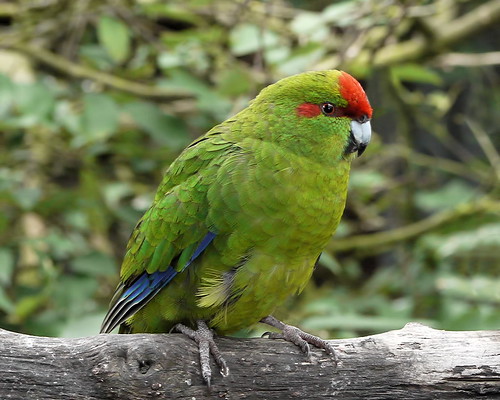 This Kākāriki or Red-crowned Parakeet (Cyanoramphus novaezelandiae) was photographed at Nga Manu Reserve, near Waikanae. Photo: Sid MosdellThe presence of a stoat on Kapiti Island has been confirmed, with the animal’s DNA found on faecal matter (scat) and a dead parakeet/kakariki that was about three weeks old, found by mustelid detection dog Crete and his handler Scott Theobold last week.
This Kākāriki or Red-crowned Parakeet (Cyanoramphus novaezelandiae) was photographed at Nga Manu Reserve, near Waikanae. Photo: Sid MosdellThe presence of a stoat on Kapiti Island has been confirmed, with the animal’s DNA found on faecal matter (scat) and a dead parakeet/kakariki that was about three weeks old, found by mustelid detection dog Crete and his handler Scott Theobold last week.
The findings, confirm last month’s sighting of a stoat by a Department of Conservation contractor. This evidence provides justification for increasing the trapping and searching effort, says DOC Kapiti Wellington Area threats ranger Clint Purches.
“Kapiti Island covers an area of almost 2000 hectares, so finding and killing the stoat is not going to be easy.”
Mr Purches said another mustelid detection dog would be brought in next week to finish the job begun by Crete and Scott, before Crete fell and broke his leg.
“Any new scat samples found can also be tested to see whether it is different genetic material, and therefore determine whether there is more than one stoat present on the island”.
Mr Purches said Crete is recovering well and is expected to make a full recovery. The replacement dog, Koha, also a border terrier/fox terrier cross and handler are expected to stay on Kapiti Island for up to two weeks.
The impact of the stoat has highlighted the effort required to keep our off-shore islands predator-free. Kapiti Island was declared free of introduced mammals in 1998 after many years spent eradicating goats, cats, deer, sheep, cattle, pigs, dogs, possums and rats. It is now home to some of the rarest wildlife in the country and one of the nation’s most important sites for bird recovery.